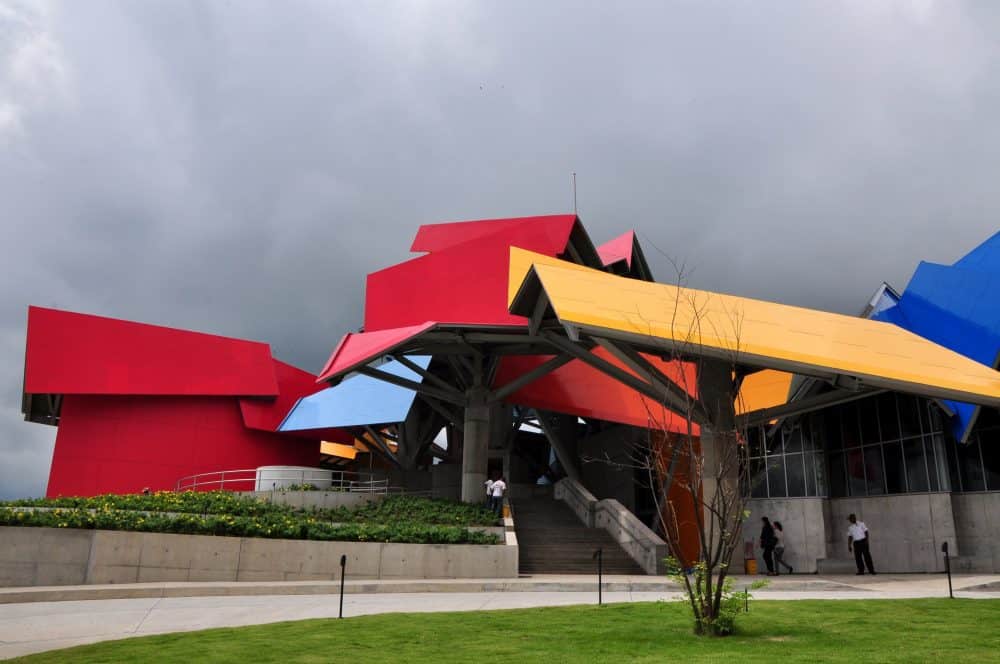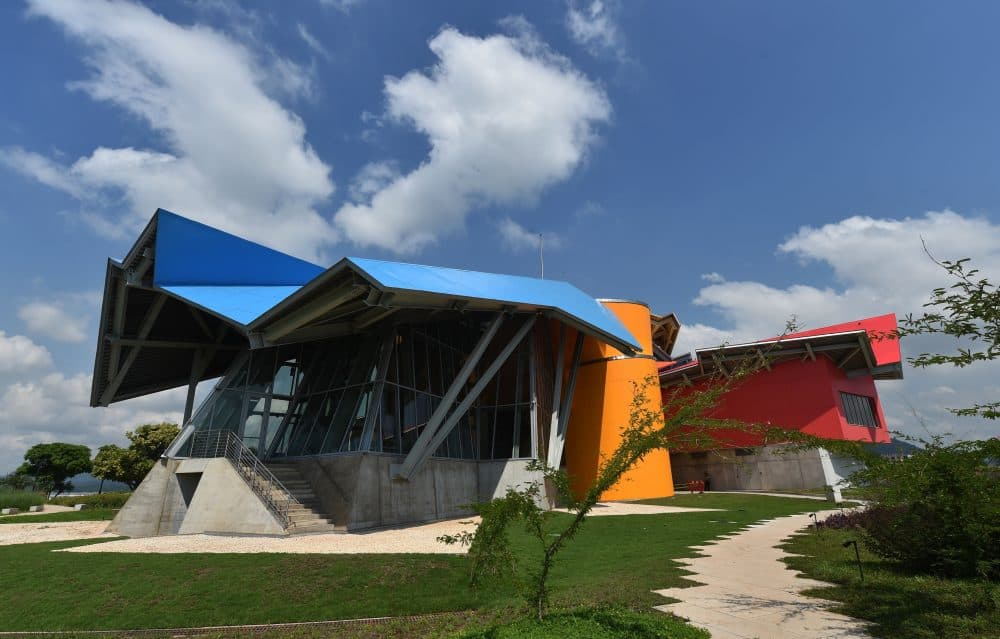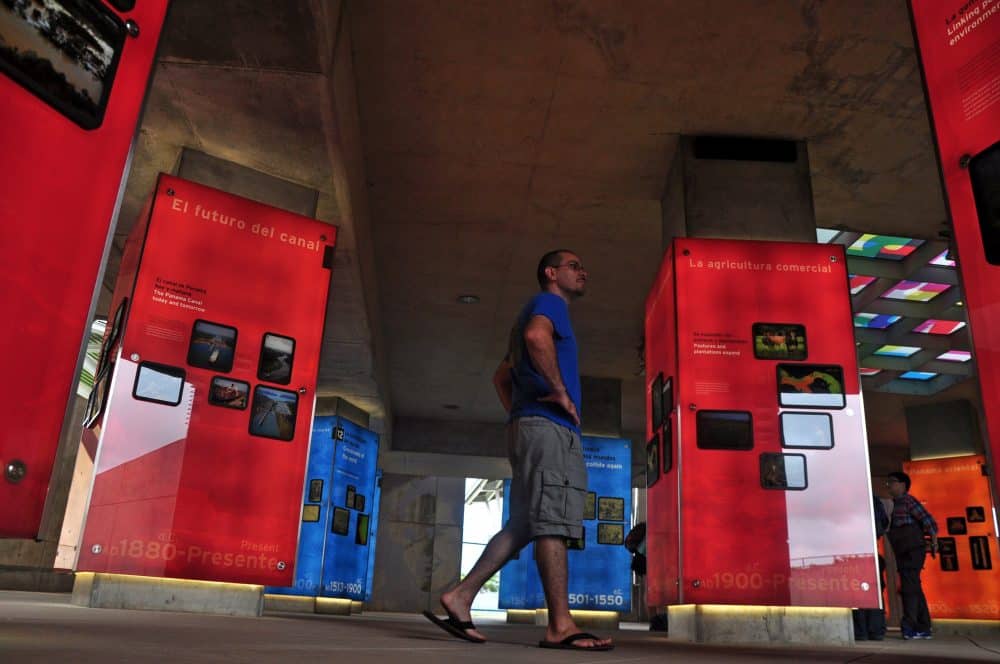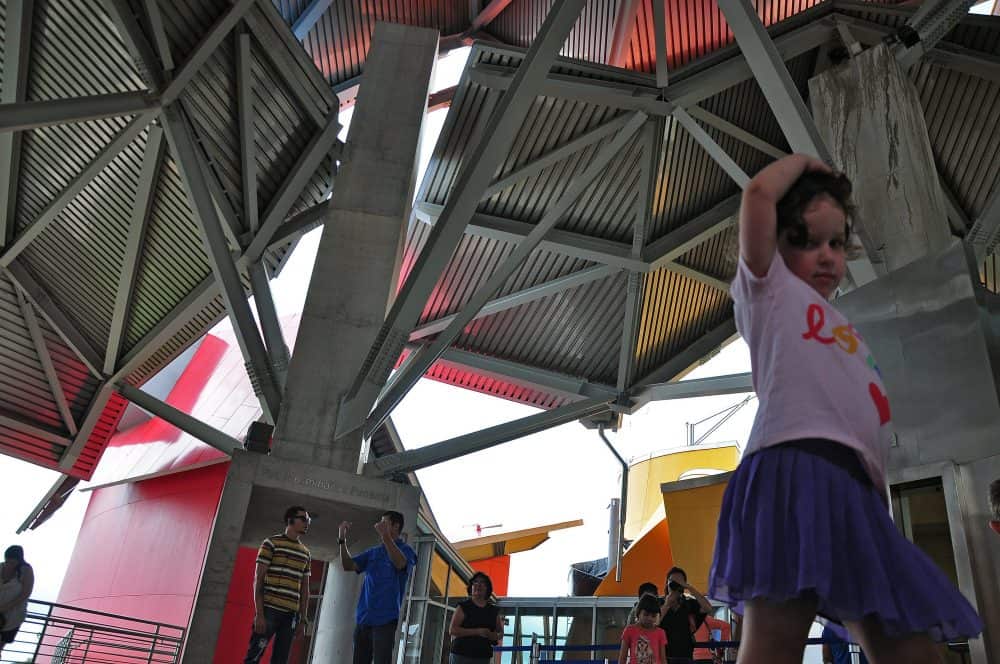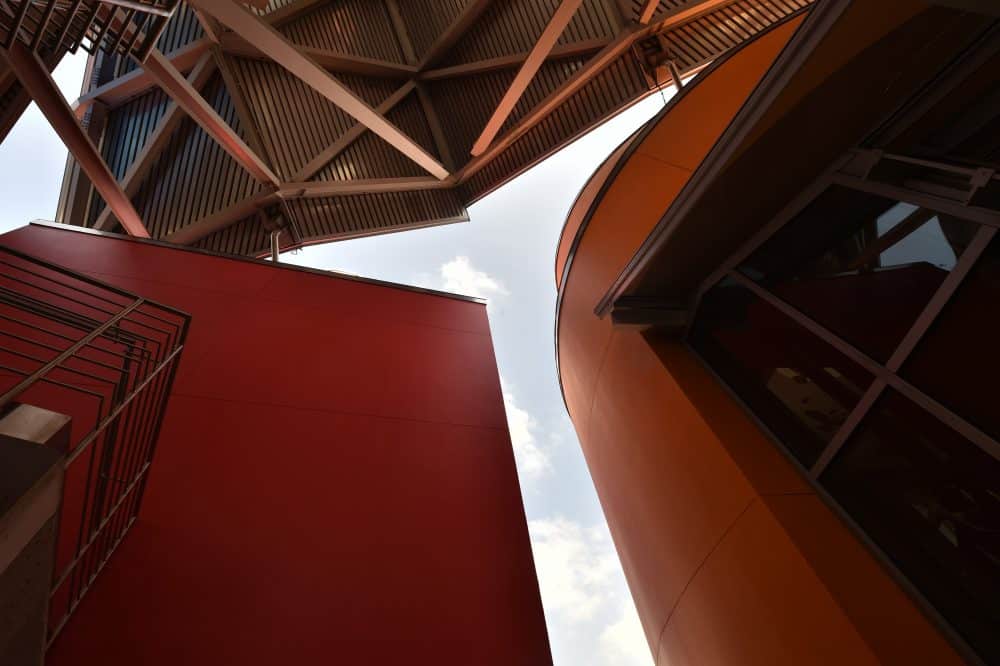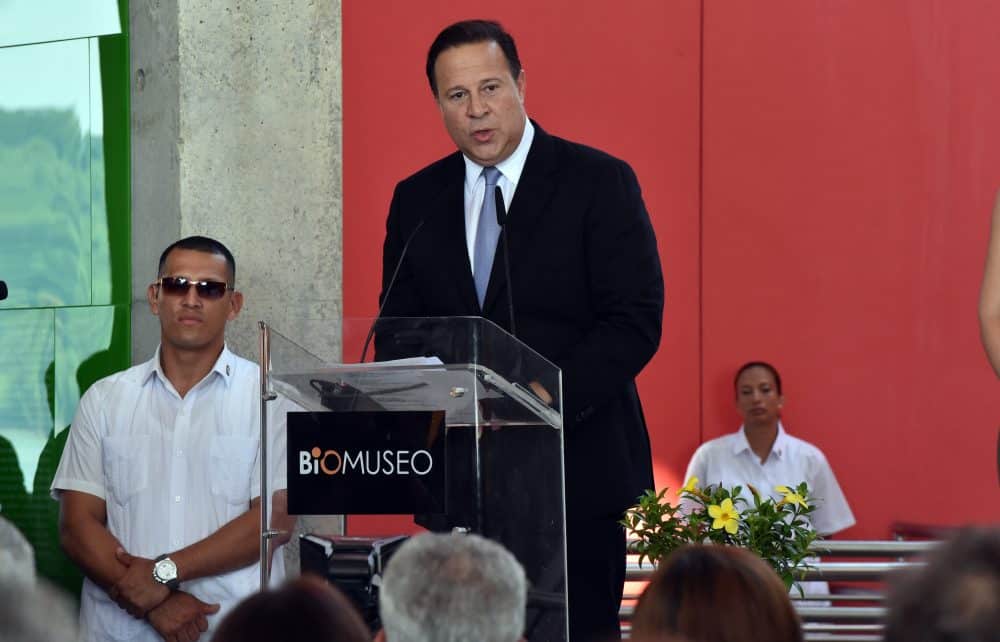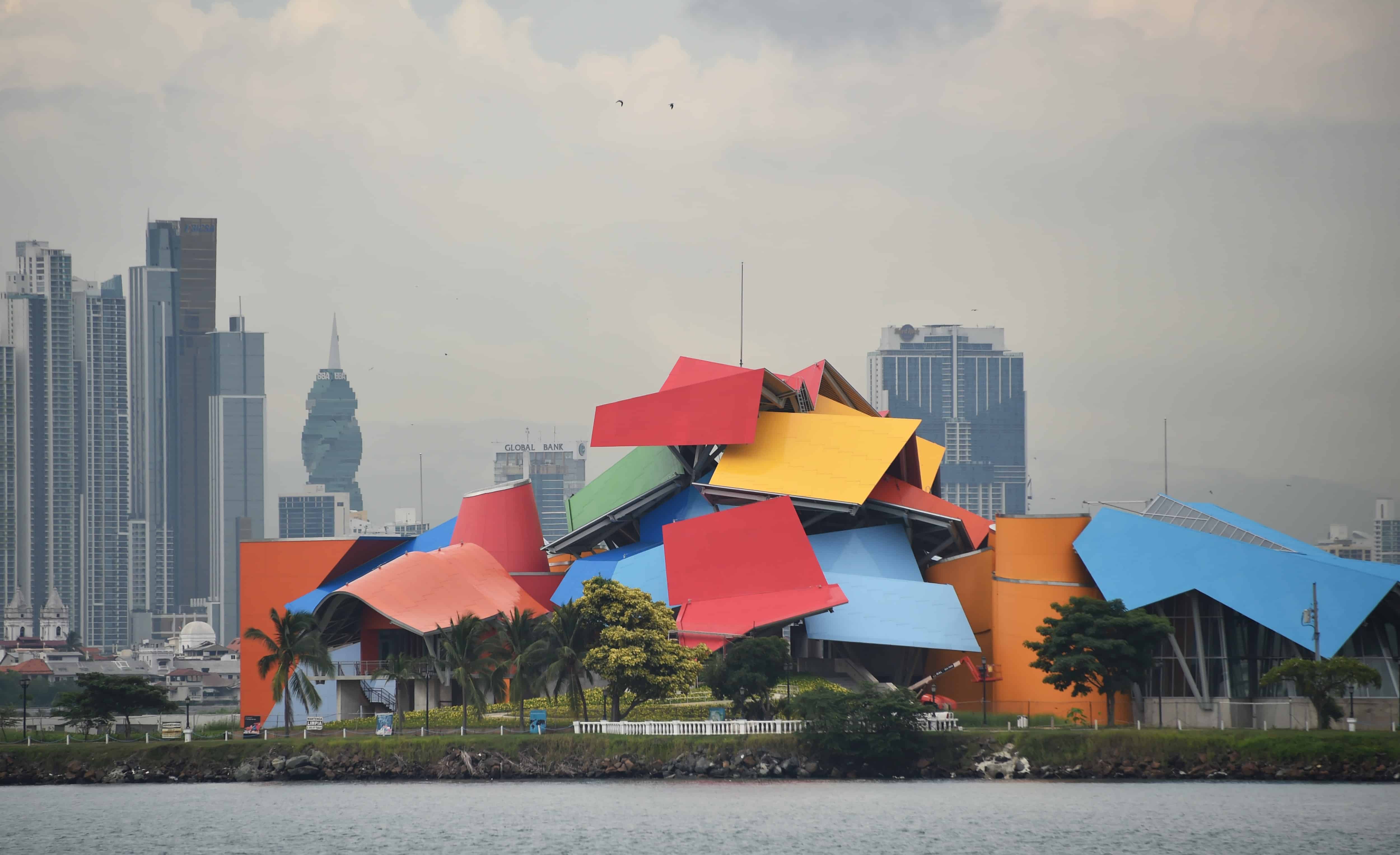A natural history museum designed by famed architect Frank Gehry opened in Panama City this week. The Biomuseo — a project first conceived nearly 15 years ago and hampered by all kinds of issues — welcomed in the public for the first time Thursday.
How’s the final result look? A little like someone regurgitated a tropical rain forest all over Central America’s traditional tin-roofed houses. Which is sorta the point, claims the museum’s website, which says:
THE BUILDING WAS DESIGNED TO TELL THE STORY OF HOW THE ISTHMUS OF PANAMA ROSE FROM THE SEA, UNITING TWO CONTINENTS, SEPARATING A VAST OCEAN IN TWO, AND CHANGING THE PLANET’S BIODIVERSITY FOREVER.
The 4,000-square-meter structure on the Amador Causeway contains eight gallery spaces that will showcase Panama’s rich history and impressive biodiversity. The museum’s atrium looks out toward the canal and the skyline. Tickets cost $22 for non-residents ($11/children) and $12 for residents ($6/children). The Biomuseo also has a free education program that expects to bring 40,000 public school students to the museum each year. Outside the building, there’s a botanical garden that’s free to the public.
The garish multi-colored roofs stand out in deep contrast to the many gray high-rises and luxury hotels that make up the skyline in a city that’s slowly been transforming into Miami 2.0.
Giant metallic curves — although more angular here — are the dominant feature in Gehry’s most renowned structures like the Guggenheim Museum in Bilbao, Spain, and the Experience Music Project in Seattle, Washington, in the United States.
This is the Canadian architect’s first work in Latin America. His wife happens to be Panamanian, and after the U.S. handed over the Panama Canal to local government at the turn of the millennium, she helped conceptualize the idea and get him on board, according to an article in Smithsonian magazine (the Biomuseo is a Smithsonian Institute-affiliated museum):
AT 12:00 P.M. ON DECEMBER 31, 1999, THE UNITED STATES HANDED FULL CONTROL OF THE PANAMA CANAL AND THE SURROUNDING CANAL ZONE OVER TO THE PANAMA CANAL AUTHORITY AND THE PANAMANIAN GOVERNMENT, RESPECTIVELY. OVER THE COURSE OF THAT YEAR, A SERIES OF CONFERENCES HAD BEEN HELD IN PANAMA CITY IN ORDER TO DETERMINE WHAT SHOULD BE DONE WITH THE UNDEVELOPED LAND ON EITHER SIDE OF THE WATERWAY. GEHRY’S PANAMANIAN WIFE, BERTA ISABEL AGUILERA, TOOK PART IN THESE DISCUSSIONS. A FEW YEARS LATER, HER FAMOUS ARCHITECT-HUSBAND OFFICIALLY SIGNED ON TO BUILD A MUSEUM ON THE TOURIST-FRIENDLY AMADOR CAUSEWAY: A COLLECTION OF FOUR ISLANDS THAT SERVE AS A BREAKWATER AT THE MOUTH OF THE CANAL’S PACIFIC ENTRANCE.
Officials broke ground in 2005, with a $60 million budget and a completion date slated for 2011. But like the current Panama Canal expansion, the museum project would overshoot its deadline and its budget. Funding issues — the project ended up $40 million over budget — kept halting the museum’s completion. Organizers also struggled to find and train workers who could construct Gehry’s intricate design.
The Biomuseo still needs another $15 million to complete three remaining galleries, the Smithsonian reported. The most expensive area is a two-story aquatic exhibit that likely won’t be completed until 2016. Officials expect the museum to attract a half-million visitors a year, creating another financial windfall for Latin America’s fastest-growing economy.
Here are a few more photos of this spectacular monstrosity that hopefully will have some pretty neat exhibitions inside:
